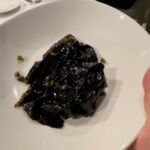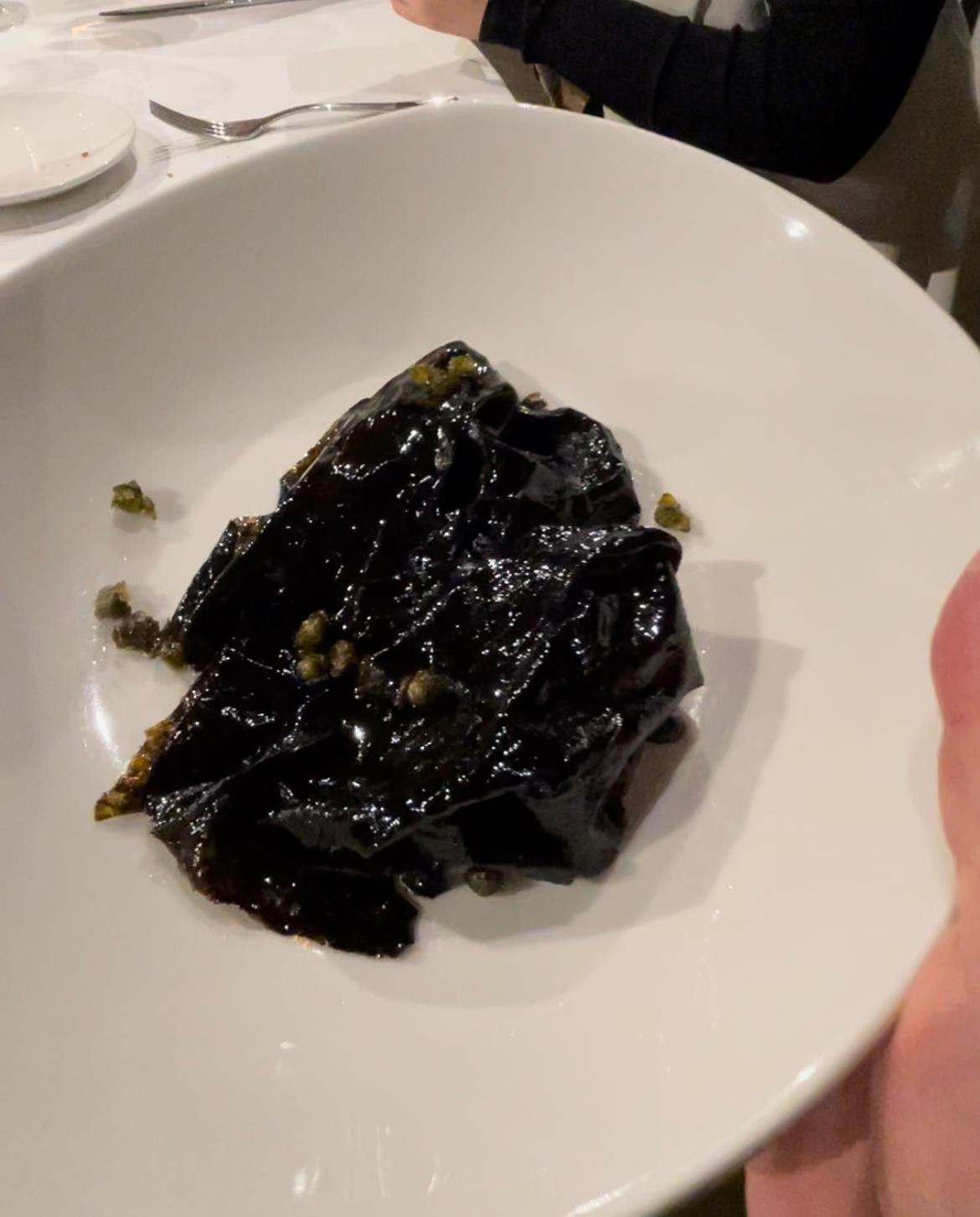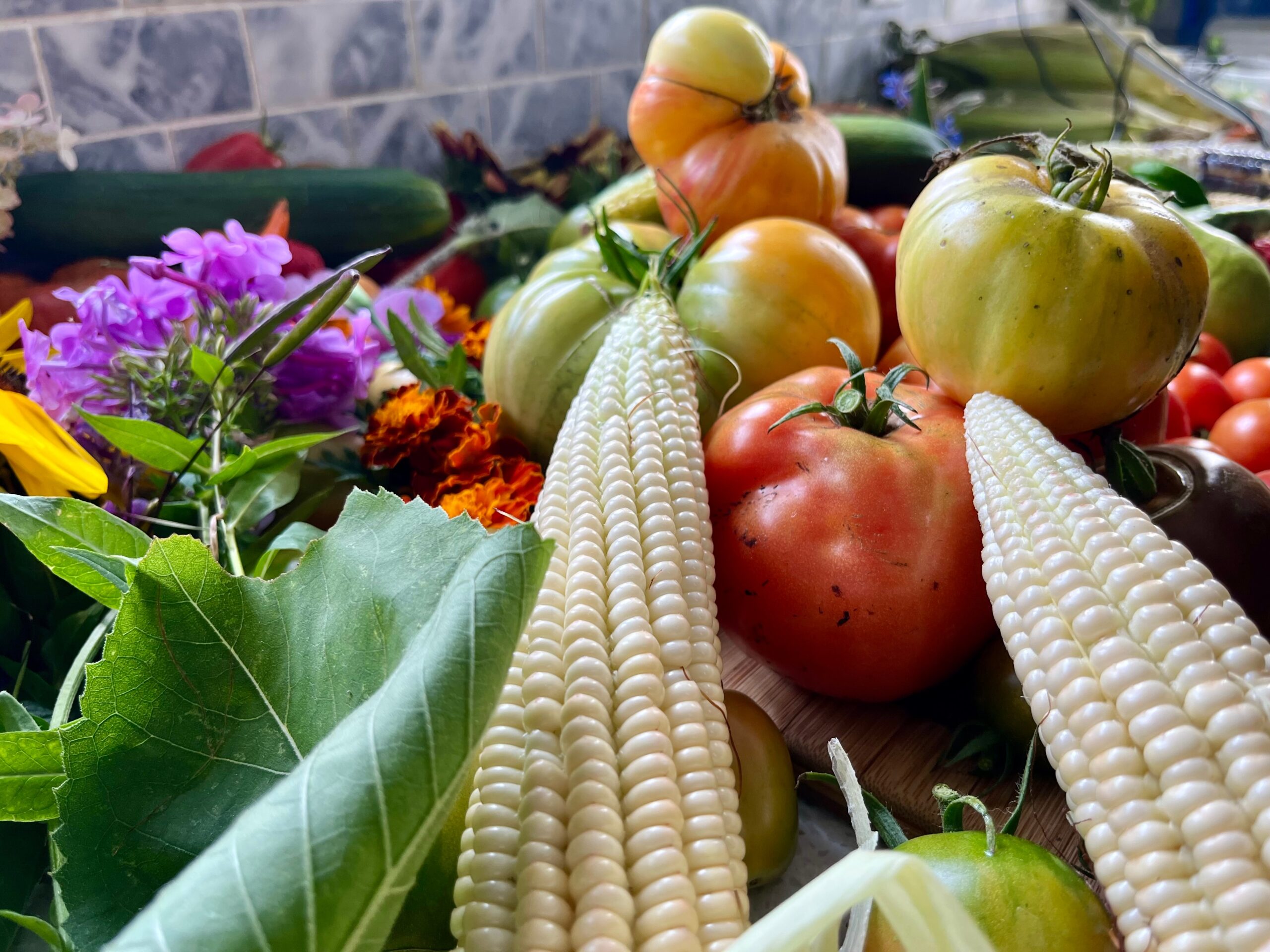
The Veggie Revolution: How Plants Took Over Fine Dining
Vegetables were once seen as punishment. Beans cooked too long. Carrots turned to mush. Peas with no life rolling across trays in school cafeterias. They were an afterthought, something to fill the plate, a small green dot next to the true stars—meat, fish, the fancy part of the meal. But in kitchens today, vegetables no longer play a supporting role. They create the drama. They represent luxury.
The Issue with Vegetables
Most folks dislike veggies because they’ve encountered them at their worst. Green beans sit for hours in hot water until they turn into gray mush. Broccoli cooks until its sulfur smell fills the room. Vegetables die twice when prepared —once in the pot, and again when eaten.
The ingredient isn’t to blame. The cook is. The gap between disappointment and pleasure is often technique. A quick toss in a hot pan keeps beans green, fresh almost crisp. Roasting carrots until their sugars brown makes them taste sweet. Slice a radish thin, add salt, and watch it change from sharp to mild.
We don’t just tell food stories — we taste them first. Listen our Vegetable episode here
The lesson hits hard but remains clear: veggies won’t let you slack off. They need care perfect timing, and focus. They reveal a cook’s approach more than any steak could.
Vegetables in Modern Gastronomy
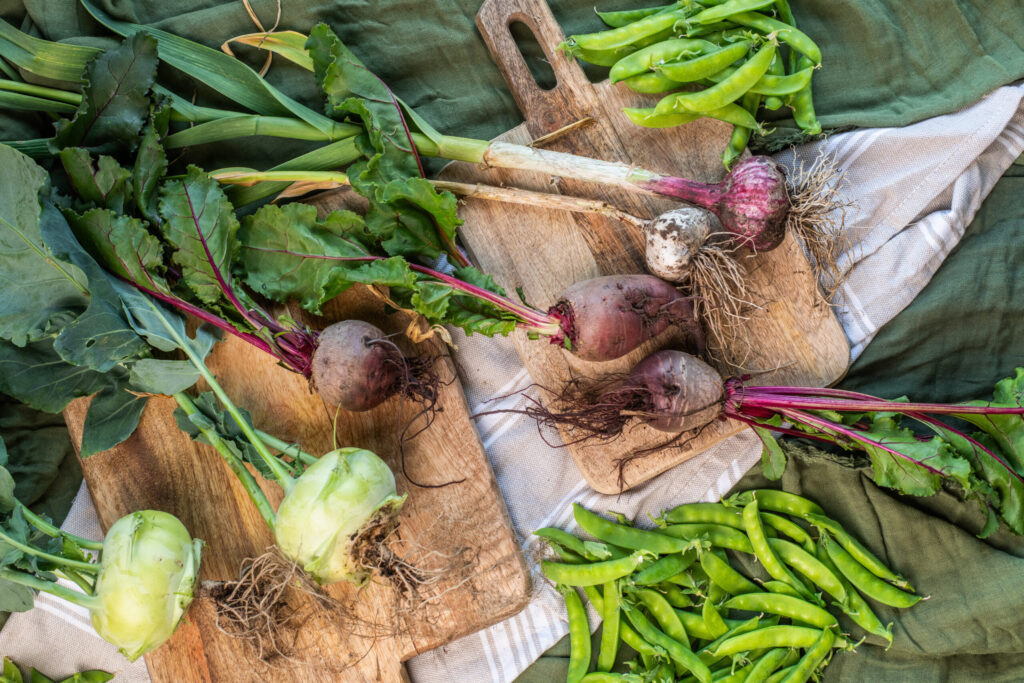
From Side to Center
The change came without fanfare. It started in Michelin-starred places then spread to casual eateries. Chefs began to put veggies front and center, not just as a side dish. A salt-roasted beet could match foie gras. A ripe tomato could hush a room. Luxury wasn’t about truffle shavings anymore—it was about the simple beauty of a flawless zucchini.
The chef’s approach took a new direction. Vegetables became a medium to express restraint, respect, and creativity. What people once saw as ordinary now stands as the height of refinement.
Meat as Seasoning
Yet old ways persist. In Chinese kitchens, a wok of cabbage shines with just enough pork fat to give it character. In southern France, Michel Bras built his gargouillou—a wild mix of leaves, herbs, and flowers—with a hint of ham. Meat turned into an accent, not the main focus. It added flavor without overpowering. It brought depth without heaviness.
This shift doesn’t mean rejecting meat. It’s about finding the right balance. Meat now supports the story, while vegetables take center stage. This flips the old way of doing things on its head.
The Vegan Shift
Some restaurants took bolder steps. Eleven Madison Park switched to vegan, with mixed outcomes. Diners hoped for excitement, but many left thinking it was good, not life-changing. At Noma however vegetable season became legendary. Guests talked about fermented roots, sauces made from forgotten plants, and umami created from nothing. They said it was the best meal they’d ever had.
The key difference lies in the approach. One restaurant removed meat as a statement. The other used cooking methods—fermenting, smoking, infusing—to discover new tastes in the earth. Behind the scenes at these kinds of restaurants, kitchens look more like science labs than farms. Yet their aim is as old as time: to make vegetables taste full of life.
The Philosophy of Seasonality
Seasonality isn’t just a catchphrase. It’s about staying alive, dressed up as something fancy. Back in the day, you ate what grew from the ground, or you starved. These days, chefs turn this basic need into a big statement about their cooking beliefs.
Dan Barber and Blue Hill
Dan Barber built his food empire on one simple idea: good nutrients mean good taste. At Blue Hill at Stone Barns, they grow veggies in soil packed with nutrients, pick them when they’re just right, and serve them up fresh. He makes a straight-to-the-point case—a carrot grown in poor soil will taste bland. But if it grows in rich lively earth, it’ll burst with flavor.
These restaurant insights reveal why some food leaves a lasting impression while others don’t. The key difference between a forgettable salad and an extraordinary one isn’t the dressing—it’s the soil.
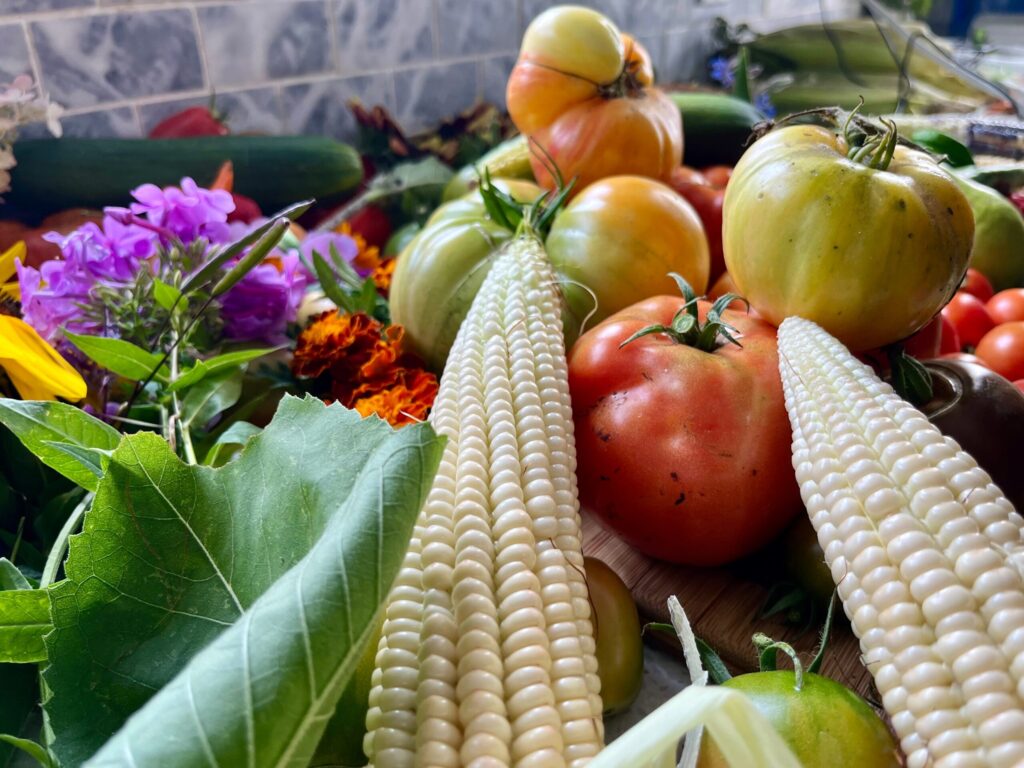
Farming as Technique
Chefs who love meat age their beef. Chefs who love vegetables grow their own. Farming becomes part of their skill set. Choosing the right harvest time is just as crucial as deciding how to cook. If you pick a beet too soon, it’s disappointing. Too late, and it becomes tough. Get it just right, and it’s amazing.
This approach represents chef philosophy at its most extreme: the work begins in the ground, not on the stove. Sometimes, the best cooking techniques are farming methods, not kitchen ones.
Heirloom Varieties
The grocery store tomato is a sham—developed for shipping, not flavor. Years of industrial farming gave up taste for toughness. But old-school types are coming back. Cooks and farmers bring back seeds that almost disappeared, not for old times’ sake but to keep good taste alive.
A tomato that falls apart during shipping might never end up on a Walmart shelf. But in the right kitchen, it shows that local food, with roots in history and different plant types, can still surprise you. This is food know-how: understanding that every carrot, pea, or radish has a tale of being lost and found.
Behind the Scenes of Restaurant Gardens
Thomas Keller’s Precision
At The French Laundry, Thomas Keller grows vegetables like he runs his kitchen—neat rows strict order controlled perfection. His culinary garden mirrors his plates: no mess, no wasted movement. Every radish, every leaf plays a part in a system that values refinement over spontaneity.
Christian Puglisi’s Wild Approach
In Copenhagen, Christian Puglisi allows his gardens to grow wild. A natural feel seeps into his food. Weeds become ingredients, disorder becomes a resource. His behind-the-scenes work focuses less on control more on working with the land.
Alain Passard’s Soil Obsession
Alain Passard has a passion for terroir. He plants identical vegetables in two separate plots to compare their tastes. A turnip from sandy earth. A turnip from clay. Identical seed identical season different character. His dishes showcase geological studies masked as cuisine.
These gardens serve as more than just hobbies. They function as culinary testing grounds. They transform philosophy into taste and tradition into innovation. They also show us that food lovers’ top destinations might not always be eateries—they might be farmlands.
Vegetables as Culture and Memory
Vegetables aren’t just plants. They’re tales wrapped in skin. A tomato won’t last forever—breeding choices, market forces, and human pride shape it. Carrots used to be purple then white, until the Dutch turned them orange to honor their rulers. Now everyone thinks that’s “natural.” It’s not. It’s marketing.
To understand food means to unlearn the myth of permanence. Farming is creativity, not fate. The veggies we take for granted are as much relics of history as the art in museums. When you eat a supermarket tomato, you taste years of settling. When you eat a tomato from a farmer who cares about taste, you savor defiance.
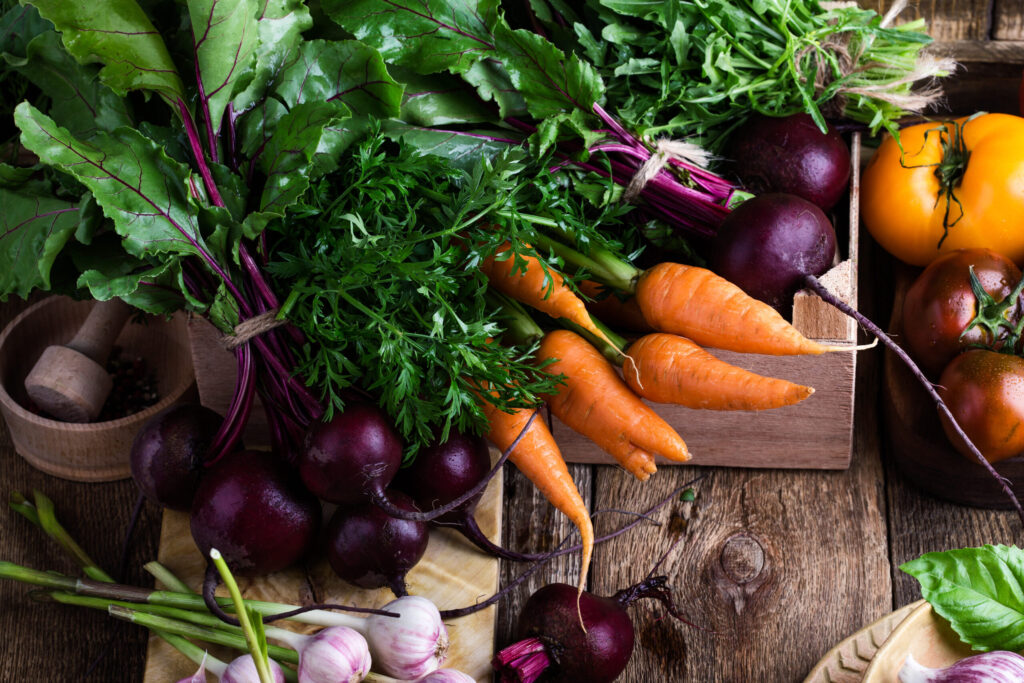
Luxury Redefined – Seasonal Treasures
Spain’s Teardrop Peas
In San Sebastián, chefs talk about guisantes lágrima—small, teardrop-shaped peas picked for just a few weeks every spring. People call them “vegetable caviar.” These peas burst in your mouth tasting sweet and delicate. Workers spend hours to shell enough for one plate. They cost as much as truffles. When you eat them, you taste morning dew and green sunlight.
Italy’s Market Tomatoes
Stroll through a Tuscan market in July, and you’ll get why Italians laugh at grocery store imports. A tomato here isn’t watery mush but a sunshine-filled burst of tang and sweetness. Even the most basic local food—a piece of bread rubbed with garlic drizzled with olive oil and topped with a chunk of that tomato—tastes like pure indulgence. No need for fancy stuff like foie gras.
Germany’s White Asparagus
In Germany, spring brings Spargelzeit—white asparagus season. Families come together at tables to peel, boil, and cover the stalks with butter and hollandaise. This goes beyond mere food. It’s a ritual. It signals the passage of time, strengthens community bonds, and instills patience. When the season ends, it vanishes. This limited availability makes it valuable.
These spots rank as top picks for food lovers—not fancy Michelin-starred restaurants, but markets, farms, and areas where vegetables receive celebration akin to religious worship.
Conclusion: The Impact of Plants
Vegetables used to be seen as just side dishes, but now they’re the real test of a chef’s skill. They show a chef’s philosophy, reveal their technique, and carry tradition in every bite. They prove that great cooking isn’t about excess, but about paying attention—to the soil, the season, and the little things.
In restaurant kitchens, chefs aren’t looking for umami in fancy ingredients like foie gras or wagyu beef. Instead, they’re finding it in fermented carrots grilled asparagus, and distilled peas. They’re taking big risks by building whole menus around something as simple as a radish. And you know what? It’s working out for them.
The message is simple. To grasp modern cuisine, don’t focus on the steak. Pay attention to the pea. Check out the carrot. Look at the tomato grown in earth that still knows how to breathe. That’s where tomorrow’s food exists.
Pot Luck Food Talks
Pot Luck Food Talks is a global podcast exploring the crossroads of food, culture, and creativity — hosted by chefs, storytellers, and curious eaters from around the world.
🎧 Listen to our latest episodes — click here
🍷 Join a food tour in San Sebastián with Erich Eichstetter — click here
💼 For collaborations, consulting, or advertising inquiries — get in touch here


